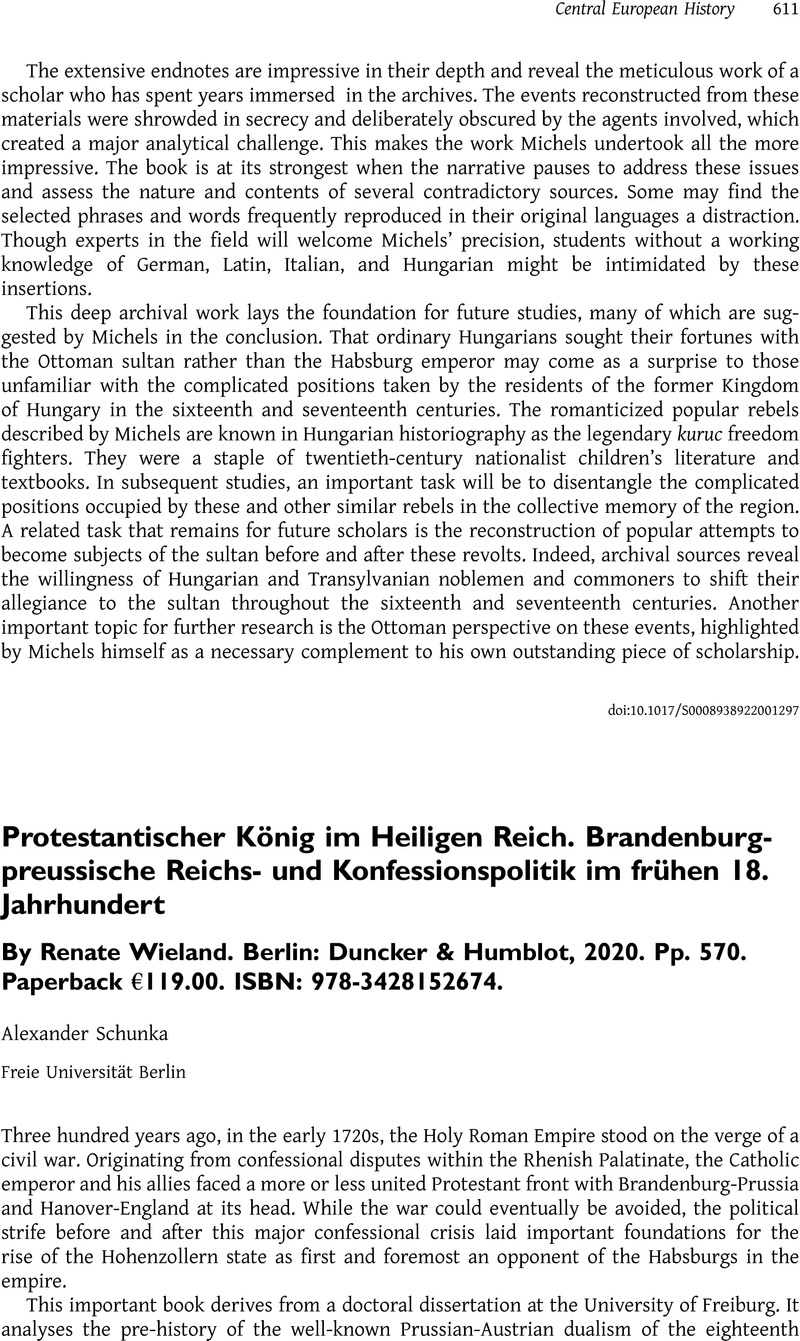No CrossRef data available.
Article contents
Protestantischer König im Heiligen Reich. Brandenburg-preussische Reichs- und Konfessionspolitik im frühen 18. Jahrhundert By Renate Wieland. Berlin: Duncker & Humblot, 2020. Pp. 570. Paperback €119.00. ISBN: 978-3428152674.
Review products
Protestantischer König im Heiligen Reich. Brandenburg-preussische Reichs- und Konfessionspolitik im frühen 18. Jahrhundert By Renate Wieland. Berlin: Duncker & Humblot, 2020. Pp. 570. Paperback €119.00. ISBN: 978-3428152674.
Published online by Cambridge University Press: 05 January 2023
Abstract
An abstract is not available for this content so a preview has been provided. Please use the Get access link above for information on how to access this content.

- Type
- Book Review
- Information
- Copyright
- Copyright © The Author(s), 2022. Published by Cambridge University Press on behalf of Central European History Society of the American Historical Association


